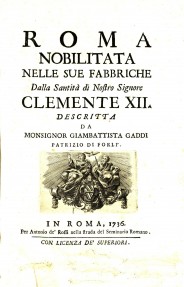
Works by Innocent X and Borromini (1650) and by Clement XII and Alessandro galilei for the Basilica of St. John's in Lateran (1735)
In the run-up to the 1650 Jubilee, Innocent X commissioned Francesco Borromini to decorate the basilica’s interior. It was an extremely challenging commission, given that Borromini was given the job in 1644, just six years before the start of the Jubilee. The Pope gave Borromini strict instructions on the need to respect the Basilica’s paleo-christian layout. The architect was only partially able to comply with this, given the building’s poor condition. Work was completed in time for a Holy Year inauguration. Two years after being elected to the Papal See, Pope Clement XII (1730-1740) launched a competition to remodel the façade. A great many architects submitted designs. Florentine architect Alessandro Galilei, who was in service with the Grand Duke of Tuscany, came up with the winning project. In just three years, (1732-1735) he managed to complete the work, giving the façade the solemn appearance that characterizes it to this day, featuring a large portico and five openings in line with the naves of the church, and a long loggia overlaid with arches. The fifteen statues arranged on its summit represent the Blessing Christ, Saints John the Baptist and the Evangelist, and theologians.
Giovanni Battista Gaddi, Roma nobilitata nelle sue fabbriche dalla santità di nostro signore Clemente XII..., Roma 1736